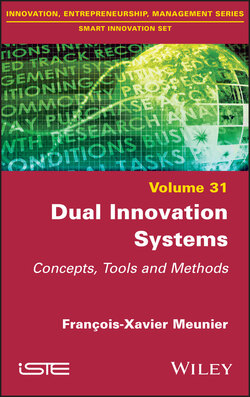Читать книгу Dual Innovation Systems - Francois-Xavier Meunier - Страница 11
1.2. Duality 1.2.1. From spin-offs to duality
ОглавлениеThe debate on the role of defense innovation in a dual technological universe is marked by extremely clear-cut positions. The first states that, due to military R&D specificities, public expenditure is less productive in this sector than in the civilian sector (Mowery and Rosenberg 1991; Lichtenberg 1995); it opposes the idea that due to these (financial, technical or organizational) specificities, defense innovation can generate technological breakthroughs that the market would not be able to bring (Alic 1994; Mowery 2009). Moreover, it adopts a position according to which civilian or military technical specificities limit technological transferability (Chesnais and Serfati 1992; Serfati 2005, 2008), or that it is first of all the civilian sector that stimulates innovation (Braddon 1999; Stowsky 2004). In reality, all these perspectives strongly depend on how defense innovation is perceived and on the authors’ understanding of the relationship between civilian and military sectors.
The first works employing the concept of dual-use technologies referred to specific technologies, which, given their characteristics, led to applications in the civilian and military fields. The direction of this dissemination ran particularly from defense to the civilian world; this was named the “spin-off paradigm” by Alic et al. (1992). They referred to technologies developed within large military programs and subsequently used for new opportunities (most of which were not expected). The orientation of these spin-offs from the defense sector toward the civilian sector dominated the perception on the civilian–defense relation until the end of 1980s. It is worth noting that this perception of duality highlights the fact that, given their nature, only certain technologies can be the object of a transfer from one sector to another.
Such an understanding of this relation focuses on the result rather than on the technological rapprochement between the military and civilian sectors (Gummett and Reppy 1988). This assessment relies on many case studies, conducted in particular in the United States at the end of the 1980s, which identify technologies that can be transferred, most often from the military to the civilian sector, but also in the reverse direction in certain cases. Industrial sectors such as data processing, electronics or aeronautics in particular have been cited in many works, such as those of Flamm (1988), Gansler (1989) and Alic (1994) or in OTA (Office of Technology Assessment) publications, such as the 1990 report entitled “Arming our allies: Cooperation and competition in defense technology”.
These studies reveal all the difficulties faced by researchers and experts in their efforts to identify technologies that pass from one sector to another and to draw a list of the industrial sectors in which they are used. Albrecht (in Gummett and Reppy 1988) points out the difficulty in measuring these spin-offs. He highlights the fact that this concept involves two dimensions whose differentiation is important: an intrasector dimension and an intersector dimension, the latter being rarely mentioned at that time, which further complicated the identification of these dual-use technologies.
Centered on dual-use technologies, this conception does not appear precise enough to account for the complexity of interactions between civilian and defense sectors. Indeed, merging the two terms – dual and use – together does not yield a concept that accounts for all the differences in how the defense world and the civilian world interact in the development of a technology (Fiott 2014).
Few authors presently believe that this dual use is intrinsically related to the nature of technology. The proposed idea is that this duality depends above all on the process of appropriation by a particular social environment (Stowsky 2004). Hence, transfer modalities in particular are studied.
This understanding of duality “relates to the ways in which objects (products and artifacts) used in a field can be adapted to others” (Molas-Gallart 1997). This raises the question of mechanisms for technology transfers from civilian to defense sectors (spin-in) and from defense to civilian sectors (spin-off). In this approach, the mutual nature of duality is more often highlighted. This leads to the idea of a long-term relation between civilian and military innovation and can generate trend reversals (Galbraith et al. 2004).
